The Cosmic Code: How Modern Geek Culture Celebrates Ancient Hindu Philosophy
As we explore the profound themes of our culture and heritage, it’s fascinating to see where ancient wisdom echoes in the most modern parts of our world. Many of the “big questions” that form the heart of Hindu philosophy—the nature of reality, the cycles of the universe, and the structure of existence—are the very same questions that fascinate today’s “geek” and “nerd” culture. From coders to astrophysicists, this modern community is built on a deep curiosity about the very systems that Hindu texts have been contemplating for millennia.
The ‘Simulation Theory’ and Maya
In today’s tech world, one of the most popular topics is “Simulation Theory”—the idea that our perceived reality is an advanced, computer-generated illusion. This is a concept that will sound incredibly familiar to any student of Hindu philosophy. The principle of Maya teaches that the material world our senses perceive is a form of divine illusion, a “play” (Lila) that veils a deeper, ultimate reality (Brahman). For the modern programmer who builds virtual worlds from lines of code, or the gamer who spends hours inside one, this ancient philosophical concept is not just familiar; it’s a daily reality.

The Universe in Billions: Kalpas and Cosmology
For much of Western history, the universe was thought to be only a few thousand years old. Ancient Hindu cosmology, however, always “thought bigger.” The texts describe vast, mind-bending cycles of time. A single Yuga lasts for millions of years, and a Kalpa—a single “Day of Brahma”—spans over 4.3 billion years. It’s a timescale of cosmic creation, destruction, and rebirth that was, for centuries, unmatched in its scale.When modern scientists like Carl Sagan first encountered these numbers, they were stunned. This ancient philosophical timeline was remarkably in line with the 20th-century scientific consensus for the age of the Earth (around 4.5 billion years). It’s this shared appreciation for immense scale and mathematical beauty that connects the ancient rishi with the modern astrophysicist.

The Ultimate System: The Trimurti
Modern geeks love complex systems. A perfectly balanced algorithm, the laws of thermodynamics, or the lifecycle of a star—all are celebrated for their elegance. This is the very essence of the Trimurti: Brahma (the creator), Vishnu (the preserver), and Shiva (the destroyer). This isn’t just a divine story; it’s a perfect model for a dynamic, self-sustaining system. It’s the ultimate “cosmic code” for a universe that is in a constant state of flux—creating, maintaining, and recycling itself. This deep connection—between the scientist and the sage, the programmer and the philosopher—is what we celebrate.

At the store, Geek T Shirts Company, they create apparel for those who love to “wear their world,” whether that world is found in a scientific formula, a line of code, or a mind-bending philosophical concept. This shared curiosity for the “big questions” is a reminder that these profound ideas are, and have always been, a core part of human culture.
Caring for Your Bodhi Seed Jewelry: Tips for Long-Lasting Energy
Bodhi seed jewelry holds deep spiritual significance, symbolizing enlightenment, mindfulness, and inner peace. Whether worn as a mala, bracelet, or pendant, each piece carries not only natural beauty but also powerful energetic qualities. To keep your Bodhi seed jewelry vibrant in both form and spirit, it’s essential to care for it with intention and respect. Proper maintenance will preserve its physical condition while also supporting its sacred energy. Here are some practical ways to cleanse, store, and protect your jewelry for long-term use.

Cleanse with Care: Honoring the Sacred
Because Bodhi seeds are used in Mala Bead necklaces and are organic and porous, cleaning them requires a gentle, mindful approach. Avoid using harsh chemicals or soaking them in water for long periods, as this can cause the seeds to crack or lose their natural oils. Instead, wipe your jewelry with a soft, dry cloth to remove dust and dirt. For occasional deeper cleansing, lightly dampen the cloth with water or a mild natural oil like coconut or sandalwood. This not only refreshes the beads but also enhances their earthy scent and energy.
Cleansing isn’t only physical—it can be energetic too. Regularly smudge your Bodhi seed jewelry with sage, palo santo, or incense to remove stagnant energy and restore its spiritual charge. You can also place your jewelry under moonlight on a full moon night or rest it on a bed of Himalayan salt or natural crystal like selenite. These practices help realign the energy of your beads and bring them back to a state of balance and clarity.
Storage and Rest: Letting the Energy Breathe
When not in use, give your Bodhi seed jewelry a dedicated space to rest. Avoid tossing it into drawers or leaving it tangled with other accessories. Instead, store it in a natural fiber pouch—cotton, silk, or hemp—or place it in a wooden or clay box to protect it from moisture and artificial materials. Keeping it away from direct sunlight and extreme temperatures also helps prevent the beads from drying out or fading.
If your mala or bracelet is used for meditation or prayer, treat it with reverence even in storage. Some practitioners place their sacred items on personal altars or in a space reserved for spiritual tools. This helps preserve the energetic purity of the piece and keeps its purpose clearly aligned.
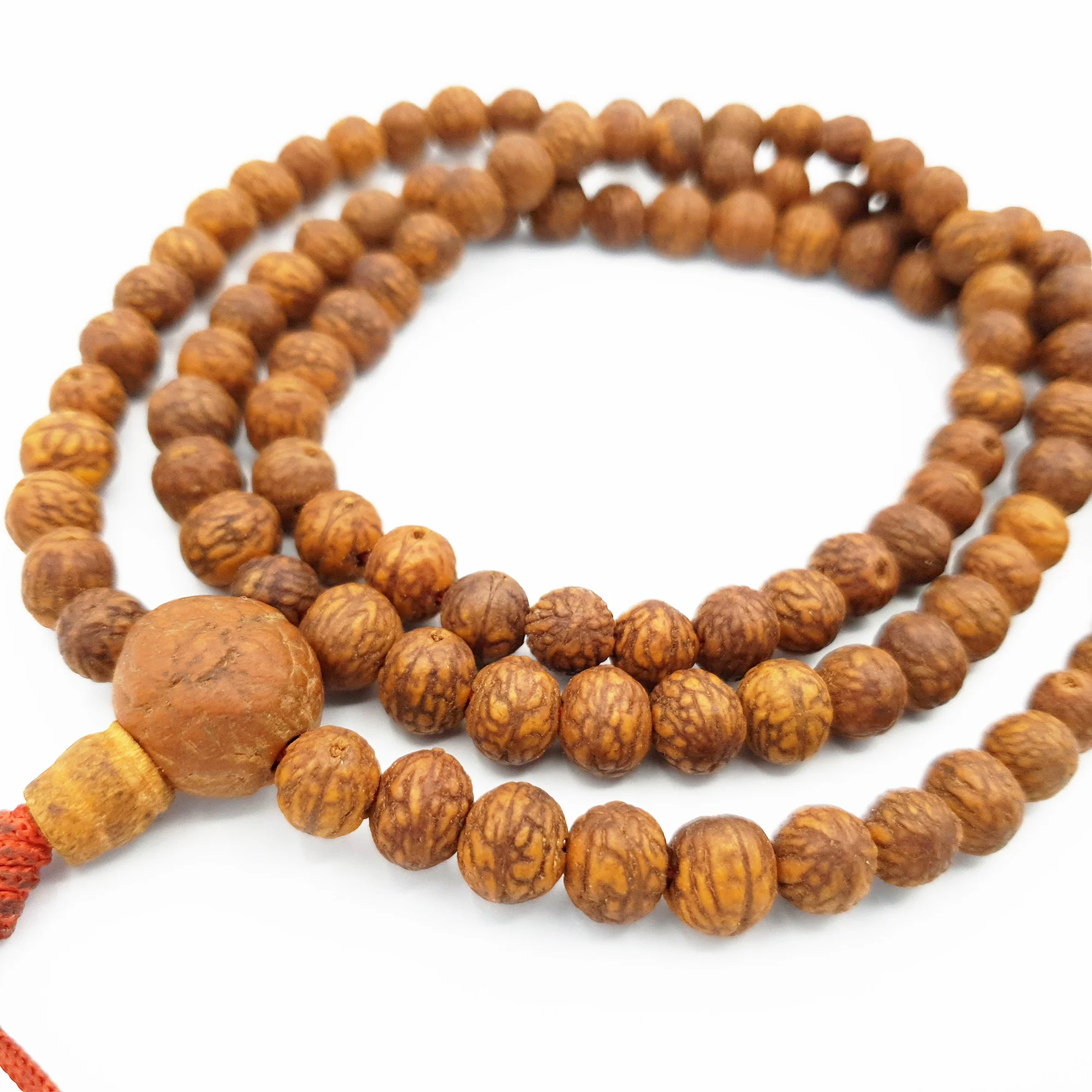
Wear with Intention: Protecting Physical and Spiritual Integrity
Wearing Bodhi seed jewelry is more than a fashion choice—it’s a spiritual practice. With that in mind, it’s best to avoid exposing the beads to water, perfume, or sweat whenever possible. Remove your jewelry before bathing, swimming, or intense physical activity, as moisture can weaken the seeds and alter their natural patina.
Equally important is the energy you bring while wearing it. Bodhi seed jewelry absorbs and reflects your spiritual state. Approach it with mindfulness, and over time, it will become a deeply personal companion on your journey. By wearing your jewelry during meditation, chanting, or calm reflection, you allow it to absorb your intentions and radiate peaceful energy back to you.
With simple, respectful care, your Bodhi seed jewelry can remain a powerful source of grounding and spiritual strength for years to come.
Traditional Foods Eaten During Hindu New Year Festivals (and What They Symbolize)
Sweet, Bitter, and Balanced: The Symbolism of Ugadi Pachadi
One of the most symbolic New Year dishes is Ugadi Pachadi, a traditional preparation from Andhra Pradesh and Telangana. This unique chutney-like mix includes six ingredients—neem flowers (bitter), jaggery (sweet), tamarind (sour), green chili (spicy), salt (salty), and raw mango (tangy)—each representing different emotions and experiences we encounter throughout the year.
This dish is not just about taste—it’s a philosophical statement. The bitterness of neem reminds us that challenges and pain are inevitable, while the sweetness of jaggery encourages us to savor life’s joys. Tamarind and raw mango add complexity, symbolizing surprise and transformation. Ugadi Pachadi teaches that a fulfilling life is not made of only happiness, but a blend of all emotions. Consuming it at the start of the year sets a mindful tone of acceptance and resilience.
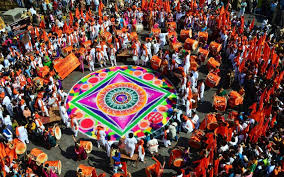
Prosperity on the Plate: Sweet Offerings and Auspicious Dishes
Sweet treats are a common theme across many Hindu New Year feasts. In Maharashtra, shrikhand and puran poli (a sweet flatbread stuffed with jaggery and lentils) are made during Gudi Padwa to signify abundance and happiness. In Tamil Nadu’s Puthandu celebrations, people prepare mango pachadi, a dish similar to Ugadi Pachadi that also balances sweet, sour, and bitter flavors to symbolize life’s mixed experiences.
In Kerala, Vishu is celebrated with a grand meal called Vishu Sadya, featuring a variety of vegetarian dishes served on a banana leaf. Ingredients like coconut, lentils, and ghee-rich desserts represent fertility, nourishment, and divine blessings. Special attention is given to preparing foods using seasonal produce, reflecting the importance of living in harmony with nature.
Sweets are often shared with neighbors and offered to deities as a gesture of devotion and goodwill. They also serve as a symbol of renewal—inviting sweetness into the year ahead while offering gratitude for the past.
The Act of Eating as a Spiritual Ritual
In Hindu culture, food is viewed as a form of prasad—sacred offering—and consuming it is an act of receiving divine blessings. During New Year festivals, meals are often prepared with mantra chanting or after puja, infusing the food with spiritual energy. Eating with mindfulness, sitting on the floor, and using hands are traditional practices that reinforce humility, connection, and gratitude.
Ultimately, New Year foods are not just about tradition or taste—they are meditations on life itself. Every bite is a reminder to accept the highs and lows, to honor the past, and to step into the future with faith, hope, and awareness.
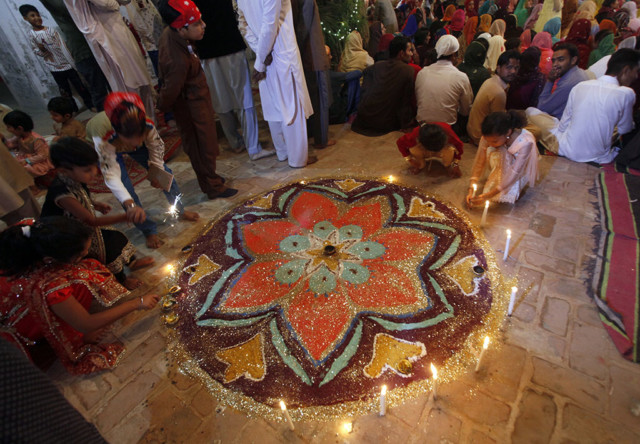
The Many Hindu New Years: A Guide to Ugadi, Gudi Padwa, Vaisakhi & More
The Many Hindu New Years: A Guide to Ugadi, Gudi Padwa, Vaisakhi & More
While much of the world celebrates the New Year on January 1st, Hindu traditions offer a rich tapestry of regional New Year festivals celebrated at various times of the year—often tied to lunar or solar calendars. These celebrations mark not just the start of a new year, but also a time for spiritual renewal, gratitude, and hope. Each region in India observes its own version of the New Year with unique customs, foods, and rituals, yet all share the common values of fresh beginnings, divine blessings, and cultural pride.
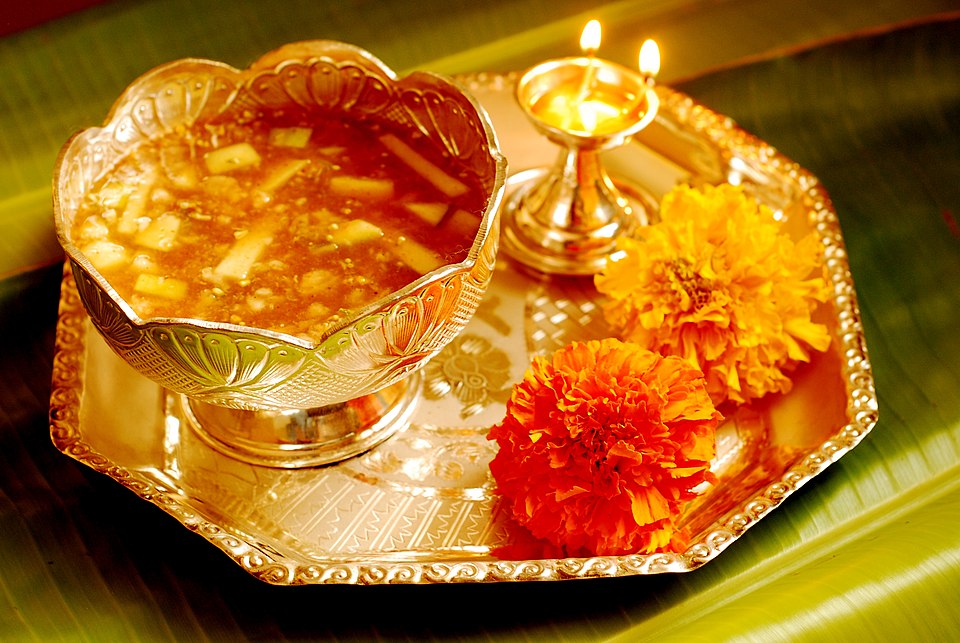
Springtime Celebrations: Ugadi and Gudi Padwa
In the southern and western states of India, Ugadi and Gudi Padwa mark the beginning of the New Year, usually falling in late March or early April. Ugadi is celebrated in Andhra Pradesh, Telangana, and Karnataka, and is considered a deeply spiritual occasion. Homes are cleaned, doorways are decorated with fresh mango leaves, and people wear new clothes. A special dish called Ugadi Pachadi is prepared, blending six tastes—sweet, sour, bitter, salty, spicy, and astringent—to represent the full spectrum of life’s experiences.
Meanwhile, Gudi Padwa is observed in Maharashtra, where families raise a bright “gudi” (flag) on a bamboo stick, draped with silk cloth and adorned with neem leaves and a garland. This symbolizes victory, good fortune, and protection. Homes are filled with the aroma of puran poli and shrikhand, and community processions feature traditional music and dance, celebrating the arrival of spring and prosperity.
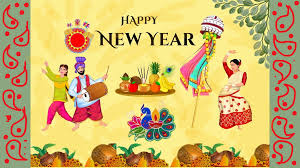
Vibrant Harvest Festivals: Vaisakhi and Vishu
In Punjab, the New Year is celebrated as Vaisakhi, a joyful harvest festival that also commemorates the founding of the Khalsa Panth by Guru Gobind Singh. On this day, people visit gurdwaras, perform bhangra and gidda dances, and share festive meals made with freshly harvested grains. For farmers, it is a day of gratitude for the bounty of the earth and a prayer for future abundance.
In Kerala, the New Year is known as Vishu, also falling in mid-April. The highlight of this celebration is the Vishukkani—an arrangement of auspicious items like rice, fruits, flowers, gold, and sacred texts, viewed first thing in the morning. This visual offering is believed to shape the blessings of the year ahead. The Vishu Sadya, a vegetarian feast served on a banana leaf, showcases seasonal ingredients and family unity.
Shared Values, Diverse Traditions
Although the names and customs differ, all Hindu New Year celebrations share powerful common themes: the triumph of good over evil, the importance of gratitude, and the renewal of spiritual energy. Whether it’s through ritual offerings, symbolic foods, or reconnecting with family and community, each festival serves as a reminder to pause, reflect, and step forward with purpose.
These regional New Years also highlight the richness of India’s cultural diversity—where different calendars, climates, and histories shape traditions uniquely, yet harmoniously. In celebrating them, we don’t just honor local customs—we participate in a larger, timeless rhythm of nature, spirit, and shared humanity.
